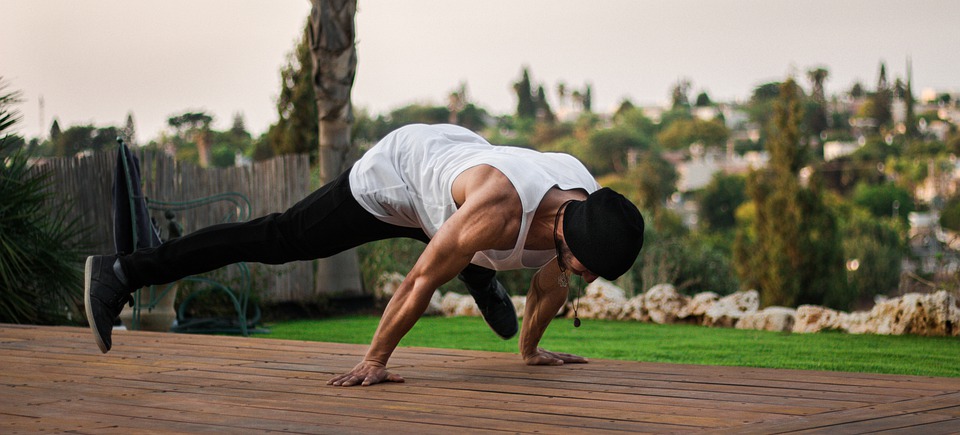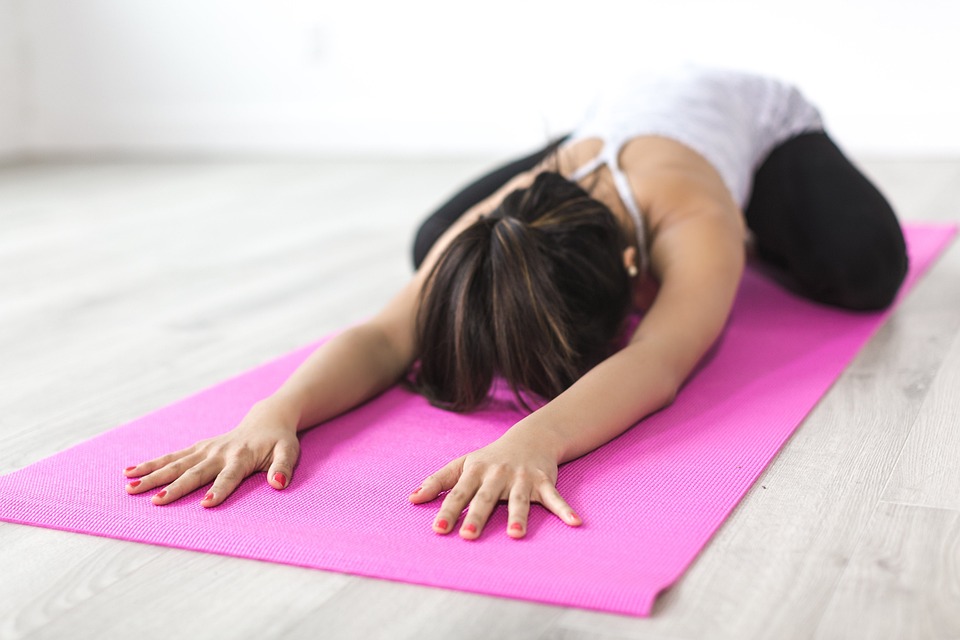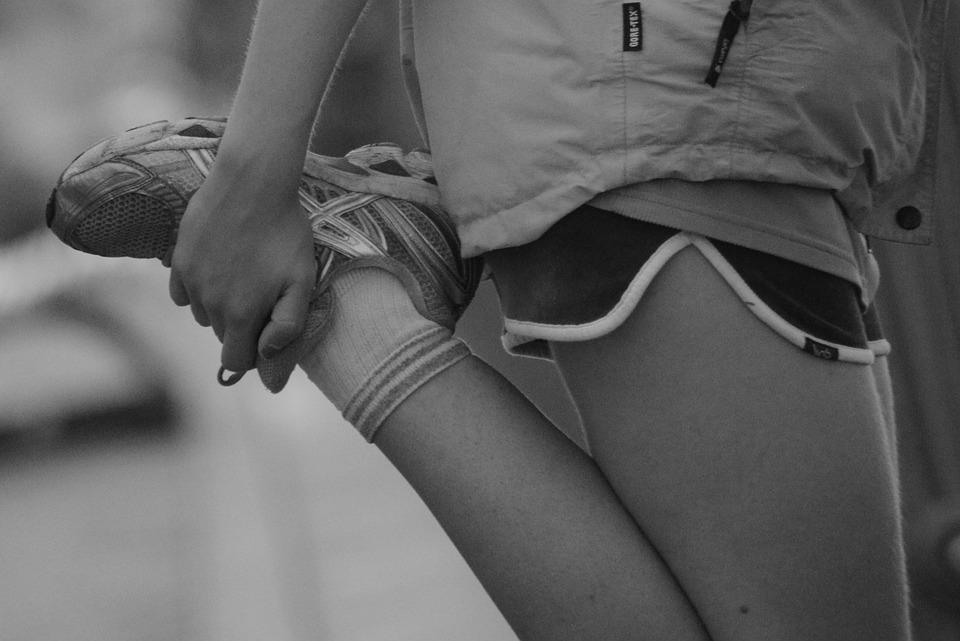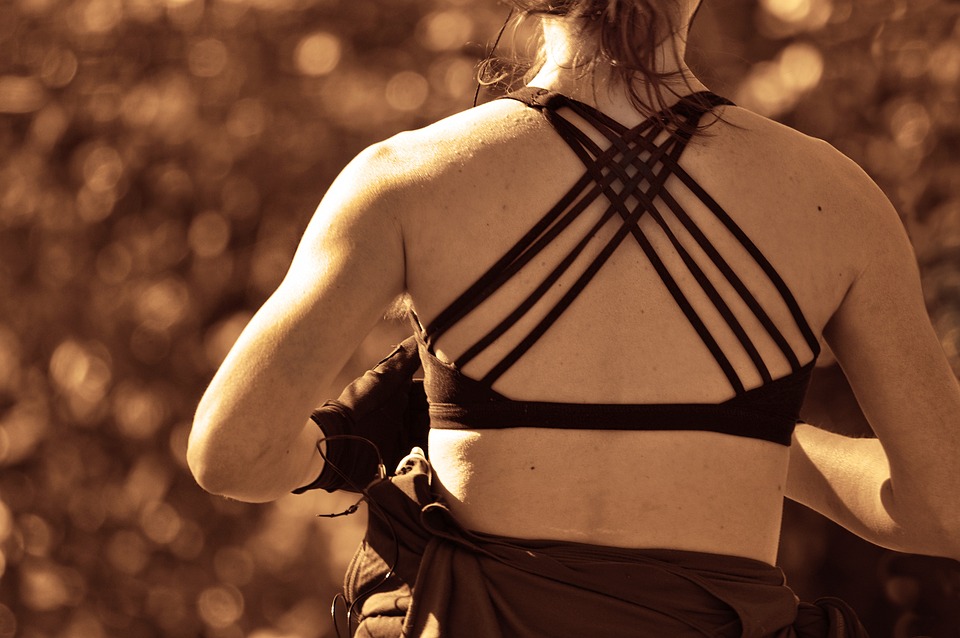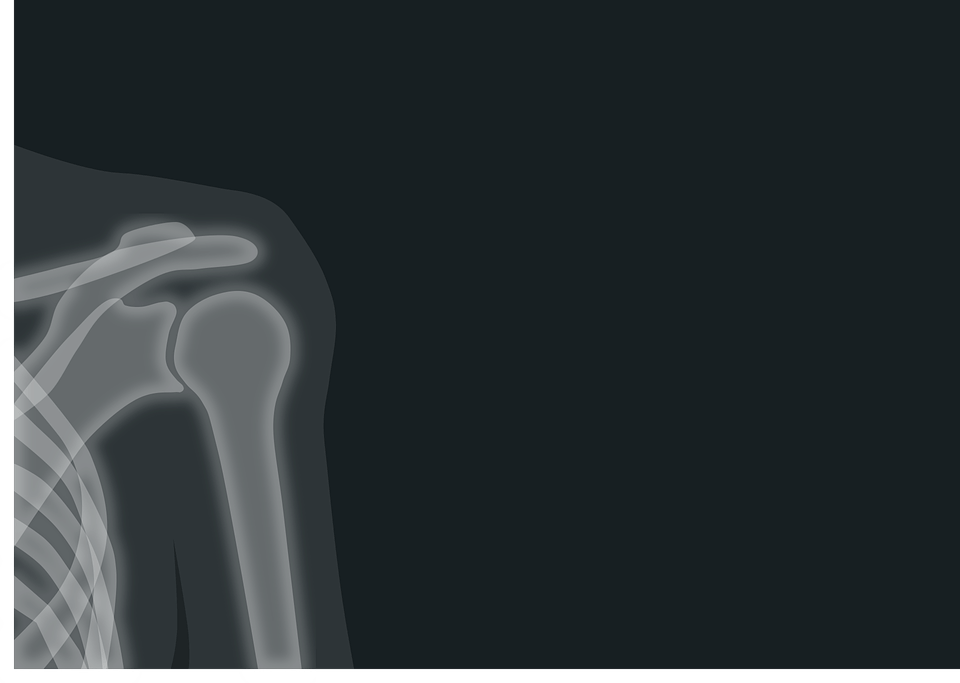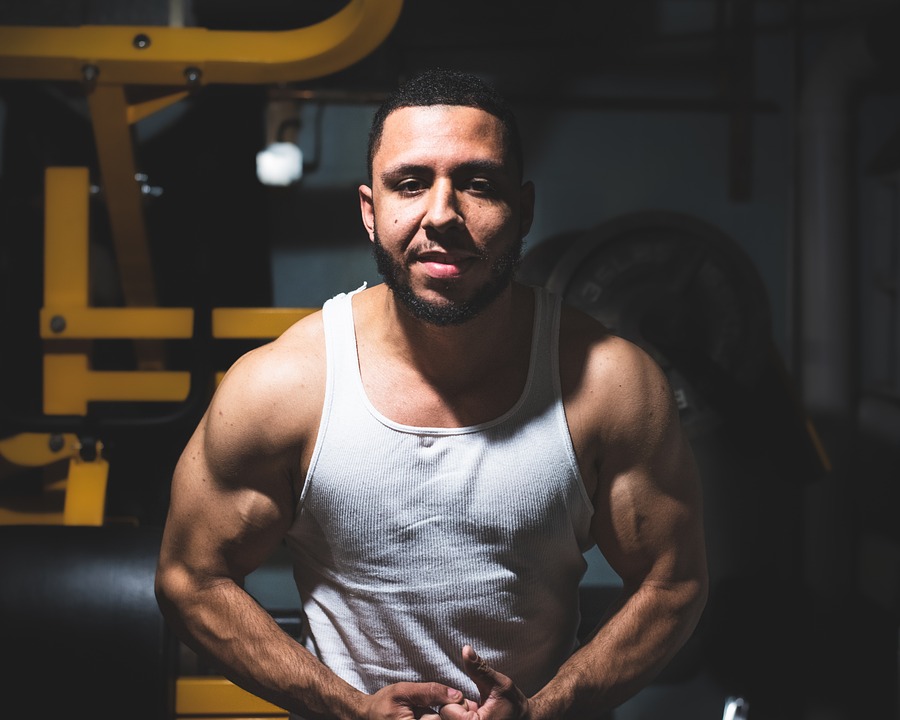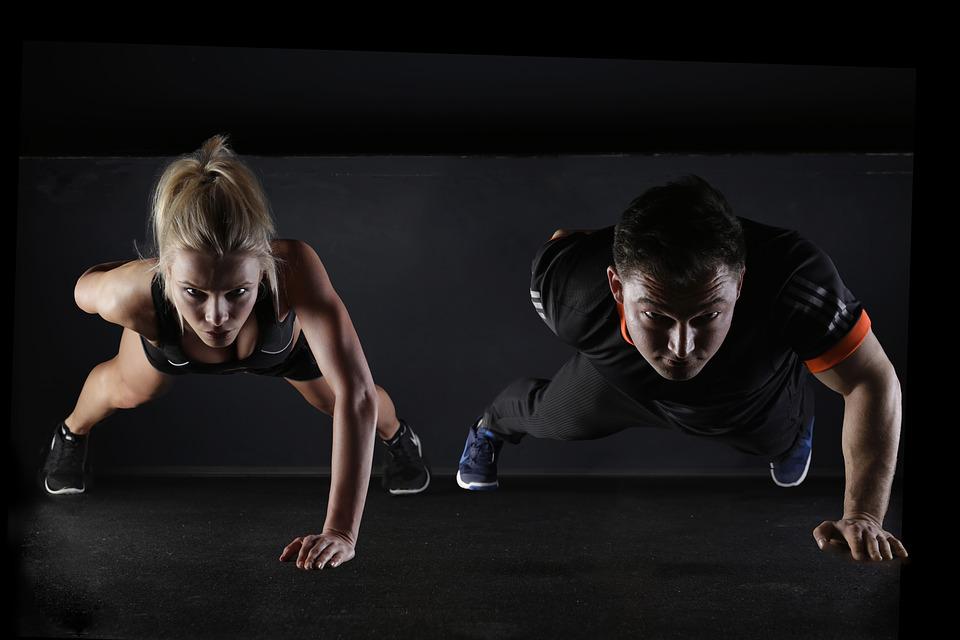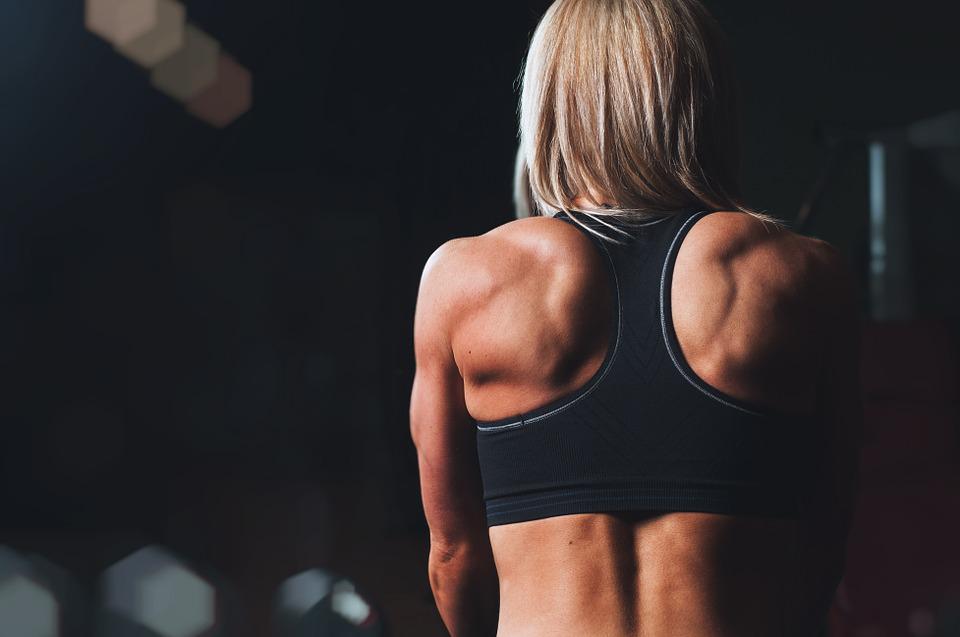
A lot of people have tightness and weakness in their shoulders from sitting at desks, driving, and using electronic devices all day. This can cause slouching and neck pain. Shoulder muscles are smaller and not as deep as hip muscles, so we need to be careful when we’re strengthening them. This is especially true if our students don’t do any other kind of strength training.
The point of mobility exercises is to improve flexibility and control at the same time. Flexibility allows you to move into a shape easily, but not necessarily to hold it. To develop control, you need to use movements that will strengthen the muscles around joints so they can move optimally.
Meeting students where they are
The shoulders and upper back offer a lot of potential for exploration; they are areas that require creativity and dedication from teachers. Anyone who works with populations with diverse mobility knows that shoulder and arm stability are often poor, and many traditional asanas can put stress on injury-prone wrists. It’s not that we shouldn’t strengthen wrists, arms, and shoulders—we just need to meet our students where they are.
What motivates me to work on the exercises I’m about to share with you is their diverse applicability. Yes, they build strength for students who need it, but they also maintain a range of movement for students who are considered strong, but whose strength exists in very specific movement patterns. Yoga students who do the same practice all the time, like athletes who focus on one sport, possess strength specific to the patterns of those activities. Because diversity of movement increases resiliency, mobility exercises like the ones that follow may decrease their likelihood of injury.
Following are some yoga exercises that will build strength in your upper back and shoulders without putting a strain on your wrists. You can do multiple sets of these exercises, or spread them out throughout your yoga practice. The “opportunities” and “challenges” noted in each section will help you figure out how to best incorporate them into your sequences.
It’s important to keep in mind that our brains don’t have to work hard when we’re doing something familiar. We’re naturally drawn to activities that are easy (and familiar). When you try the activities below, which may be new to you or your students, be aware of that tendency. Try to be curious, engaged, and attentive to detail each time you repeat an activity – both during a practice and over time.
SEATED SHOULDER FLEXION + THORACIC EXTENSION
As you sit cross-legged, reach your arms up and grab opposite elbows with opposite hands. To help stabilize your lower back and abs, suck your stomach in slightly. Bending to the side, circle your torso forward and to the left, then lift your chest into a backbend as you return to the center. Repeat, going the other direction. Switch the grip on your elbows (so the other arm is in front) and circle both ways again.
If you tell your students that they can do wheel pose if it is part of their practice, they will miss out on some important thoracic spine extension and shoulder flexion. This activity provides these in a way that’s accessible to almost everyone.
In addition to sitting or lying down, you can also perform this exercise while standing or in a horse stance.
Students might try to rotate their hips in a circular motion when they should be moving their spine. I often tell them if it feels like they are hula-hooping, they need to move higher up on their spine.
Make sure to encourage students to keep breathing while doing this exercise, as they will often hold their breath without realizing it.
OVERHEAD STRENGTH
Rest your head on another block. Relax your arms by your sides, palm up. Position yourself so you are lying on your back and can grab the top corners of your mat with your arms straight. Place your feet on the floor and Bend your knees. Place a block on its narrowest width or a small rubber ball (like a Coregeous ball) between your upper thighs. Rest your head on another block and relax your arms by your sides with your palms up.
Firmly grip the top corners of your mat, and extend your arms straight out from your body, as if you were trying to tear the mat in half.
Lift your legs and extend them to the sky while simultaneously drawing your navel in and pressing your low ribs down. You should try to produce a slight curve in your body from your ribs to your knees. This is accomplished by “hollowing out” through your front while still maintaining the natural curve of your lower back.
To do this move, start by squeezing the prop. Then, lower your legs to the ground slowly while keeping your navel pulled in and your legs straight. If it feels like the fronts of your hips are straining or your low back is lifting away from the floor, try to create length through your spine and your legs instead of lowering your legs all the way to the ground.
You can try doing different things to work your leg muscles, like doing 3 sets of 6-10 slow, fluid leg lifts, or 2-4 lifts where you lower your legs 10 degrees at a time and hold them there for a moment before lifting them back up. Remember that it’s usually easier to lift your legs when gravity is helping you, so experiment with different speeds.
This is a strong exercise that can be done by people of all ages. It involves a range of movement similar to what you get with a shoulder press, but without the need for weights.
Students may be hesitant to grip their mat corners tightly for fear of ripping the mat, but this has never been seen to happen. They may also be tempted to use momentum to swing their legs up and down, rather than using control. In these cases, it is important to encourage students to use proper engagement.
Remember that taller, larger yogis have more weight to move than shorter, smaller yogis. Look for signs of strain and encourage students to bend their knees slightly if necessary, as this can help prevent them from overworking their hip flexors.
360-DEGREE SCAPULAR MOVEMENT (SHOULDER CIRCLES)
Begin by drawing your shoulders down and back; you should feel your shoulder blades begin to slide down your back. From a seated position, stretch your arms out in front of you and hold a block horizontally between your palms, keeping your fingers relatively straight and spread slightly apart. To stabilize your core and spine, engage your abdominal muscles; this helps ensure that the movement is isolated in your shoulders. Begin by drawing your shoulders down and back; you should feel your shoulder blades begin to slide down your back.
The following text is about how to properly stretch your arms. To do this stretch, first roll your shoulders back and down, as if you were trying to put them in pockets that are behind you. Then, press them forward and up towards your ears. Make sure to really emphasize the end range of motion in each direction. Do this for a few seconds, then take a break. Switch directions and repeat.
This exercise is good for developing a range of shoulder movements. You can do it seated, kneeling, standing, or in chair poses.
If you want to make the exercise harder, you can change your position in relation to the floor. For example, doing the exercise from a tabletop position with your knees hovering above the ground will make it more difficult because you are now using your body weight. This variation is better suited to experienced yogis who have developed proprioception skills. If they don’t have the wrist strength to hold their knees up in this position, that’s okay! Ask them to focus on engaging their abdominal muscles while pretending their knees are going to lift off the ground.
If you have limited range of motion in your shoulders, you may unconsciously bend your elbows during this exercise, which negates its benefits. So if you don’t notice your elbows bending, you may need reminders.
DIAGONAL BLOCK SWIMS
To do this pose, start by lying on your stomach on the ground. Place a foam block in front of you, and press your hands into the short ends of the block. Then, reach your arms forward and lift your upper body and legs up off the ground into a locust pose, holding the block overhead.
Take the block in your right hand and reach it behind your back. Take the block in your left hand and reach it behind your back. Swim your left arm back and grab the block from your right hand. Swim your right arm back and grab the block from your left hand. Swim your left arm forward, followed by your right arm. Take the block in your right hand and swim it back, repeating the circle in the same direction four to eight times. When fatigued, take a rest. Then switch directions.
The movement described in the text is good for developing body awareness, back-line strength, and shoulder mobility.
Though this exercise is most effective when done in locust pose, it can also be done sitting in a chair, in chair pose, or standing.
I was really surprised by how much the students wanted to move both arms at the same time! I emphasized that one arm should move, then the next, so that the circle becomes a fluid movement of isolated parts.
4 Ways to Use a $3 Yoga Strap for Shoulder Mobility
Standing Circles | 5 breaths per side
Use a small dumbbell or a can of soup. This exercise will help to warm up your upper back and shoulders, as well as activating your core. You can use a small dumbbell or a can of soup for this.
- Start standing with your feet hip-width distance apart. Bend your knees slightly and engage your abs.
- Hold the strap overhead with your hands a few feet apart.
- Take a deep inhale, then exhale as you take a big clockwise circle, coming back up to the top on your inhale.
- Repeat for five breaths and then go counterclockwise for five more breaths.
Strap Backpack | 5-10 min
Use this method to improve your posture and loosen your tight shoulders while you are sitting at your desk, driving, or relaxing at home.
- Start by taking the strap behind your back so that it rests along the bottoms of your shoulder blades.
- Bring the ends of the strap underneath your armpits and out in front of you. Then bring the ends of the strap up and over your shoulders so that they look like backpack straps.
- Cross the straps between your shoulder blades so that they make an X. Then, pull the ends of the straps down and away from each other to feel your posture straighten and your trapezius release.
- Bring the ends of the strap back around the front of your body and buckle them together in front of your ribs. Make sure it is just tight enough that your spine feels erect.
- Keep your strap backpack on for 5-10 minutes.
Half-Moon Arms (Side) | 5 breaths per side
This stretch releases tightness in the SITS muscles, the lats, and the intercostals, which can often cause pain in the lower back and sides.
- Begin kneeling down on a mat with your knees together. Sit your hips back on your heels and lift your chest to an upright position. Engage your abs. Hold the strap overhead with your hands a couple of feet apart.
- Take a deep inhale, then exhale to reach your arms up and over to the right, bringing your left bicep to your left ear. You should feel a stretch through the left shoulder and lat.
- Inhale here, then reach further to the right, lengthening the left side of your body even more.
- Hold for five breaths, feeling a stretch through the left shoulder, intercostal muscles, and the lat. Then, inhale back up to the starting position.
- Repeat on the left side.
Cow Face Arms | 8 breaths
Stretching the muscles around the shoulder joint can help improve the range of motion for overhead motions, as well as release tension in the front of the shoulder, the triceps, and the latissimus dorsi (lats).
- Begin kneeling down on a mat with your knees together. Sit your hips back on your heels and lift your chest to an upright position. Engage your abs.
- Hold the strap in your right hand. Reach your right arm up overhead and then bend your elbow to lower your right hand and the strap down your upper back.
- Bring your left arm behind your lower back and bend the elbow to reach your left hand up to grab ahold of the other end of the strap.
- Walk your hands as close together as you can. Keep your abs engaged and gently press the back of your head into your right forearm.
- Hold for eight slow breaths and then release. Switch sides.
HEALTH THROUGH WEALTH OF MOVEMENT
The postures in yoga are often adjusted by adding a bind or a stretch, however these variations are not typically used for strengthening. They are more useful for stretching tissue and require a lot of flexibility. Since yoga has reached a more diverse population, there is less interest in these variations.
After every yoga posture, do the exercises described above to address some significant movement needs that are easy to neglect. This will make your practice more efficient.

